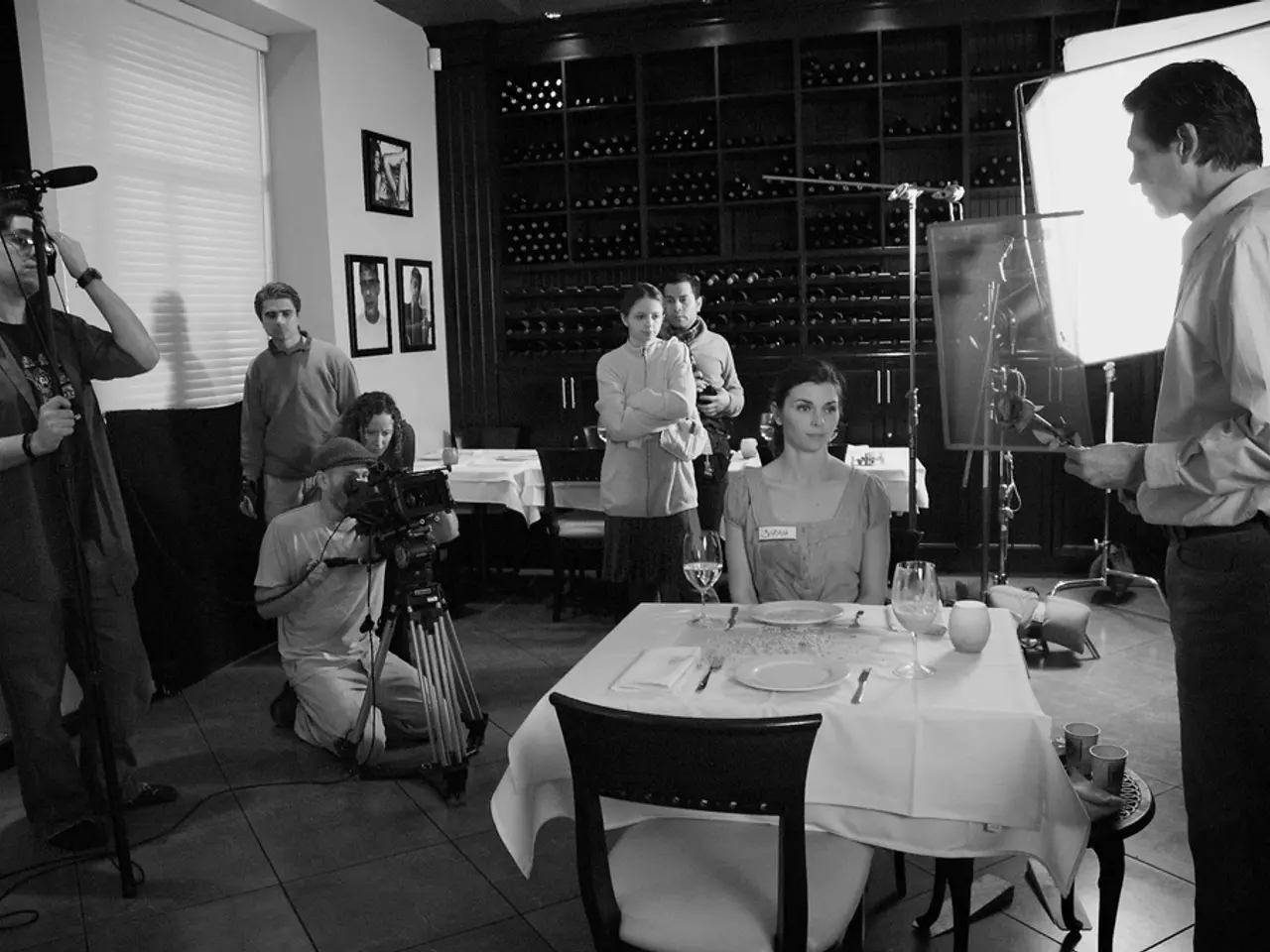Groundbreaking Advancements in Film Production
In the late 19th century, French inventor Louis Lumière revolutionized the world of entertainment with the invention of the Cinematographe, a device that could record, develop, and project films. This portable innovation enabled films to be shot outside controlled environments, paving the way for the development of documentary styles and newsreels[1][4].
A critical turning point in filmmaking came with the introduction of celluloid roll film in the late 1880s. Popularized by Eastman Kodak, this flexible, durable medium replaced the fragile glass plates used in early motion studies. The adoption of celluloid film allowed for longer, more complex films[5].
As the years passed, innovations in special effects expanded filmmakers' storytelling possibilities significantly. Techniques like matte shots, rear projection, double exposure, and the Schüfftan process, which originated from theater and photography methods, became commonplace by the 1920s and 1930s[3].
Another major milestone was the advent of sound synchronization, transforming silent cinema into an immersive experience with the introduction of "talkies" in the late 1920s.
Beyond these initial innovations, the world of filmmaking continued to evolve. Color film processes, such as the Technicolor process, began in the 1930s, allowing for realistic or stylistic use of color in films. The development of the Steadicam and lightweight cameras enabled dynamic, fluid camera movements, while digital filmmaking and CGI revolutionized production methods and post-production effects capabilities[1][3][5].
James Cameron, Steven Spielberg, and Pixar studio, among others, played significant roles in pushing the boundaries of CGI, with groundbreaking films like "The Terminator" (1984), "Jurassic Park" (1993), and "Toy Story" (1995). Director Barry Levinson created the first CGI character in "Young Sherlock Holmes" (1985).
In 1976, Garret Brown invented the Steadicam, a device that uses weight distribution and a rotating gimbal to smooth out hand-held shots, making it possible to capture smooth tracking shots in films like "Rocky" and "The Shining".
The sci-fi western "Westworld" (1973) was the first movie to use 2-D CGI, while "Tron" (1982) made extensive use of CGI. Computer generated imaging (CGI) was first developed in research labs in the late 1970s and later adopted by special effects teams in film production.
George Lucas was the first to shoot a major motion picture with a digital camera in 2002 for "Star Wars Episode II: Attack of the Clones". Today, most mainstream movies released by major studios contain some kind of CG effect. The Fox broadcast network used a digital camera for a mainstream television production in 1995.
The advent of stereoscopic imaging, or 3-D, is considered a significant filmmaking innovation. "Transitions" (1986) was an IMAX 3-D film that marked the beginning of the stereoscopic revolution.
Modern dollies, heavy sleds on four wheels that can move in any direction, with a hydraulic lift system for the camera, have replaced Segundo de Chomón's original camera dolly invention from 1907. The cameraman rides on a seat attached to the dolly, and the whole unit is pushed with great accuracy by a dolly grip.
Sony introduced digital camera technology on a small scale in the late 1980s, marking the beginning of the digital filmmaking era.
In summary, Lumière’s Cinematographe laid the foundation by enabling motion picture capture and projection in a portable form. The invention of celluloid film allowed longer narratives; advances in special effects and sound fundamentally expanded storytelling tools; and digital technologies have revolutionized the entire filmmaking pipeline, making production more flexible, efficient, and creative[1][3][5].
The invention of celluloid roll film in the late 1880s, popularized by Eastman Kodak, was a significant event as it replaced the fragile glass plates used in early motion studies, enabling longer, more complex films.
advances in technology continued to shape filmmaking, with the development of color film processes like Technicolor in the 1930s, allowing for realistic or stylistic use of color in films.




